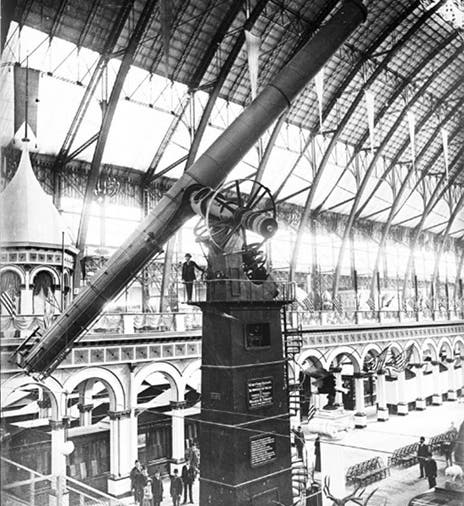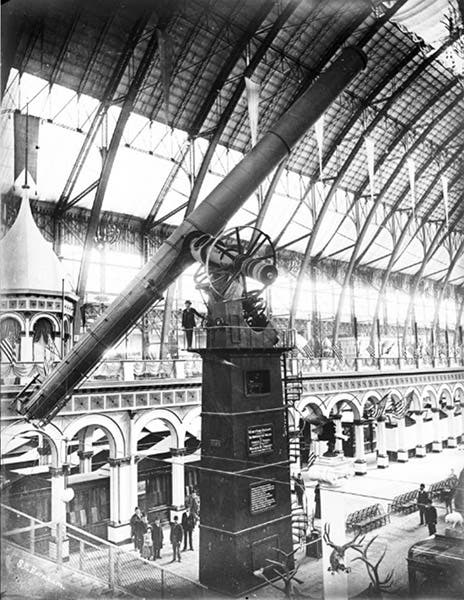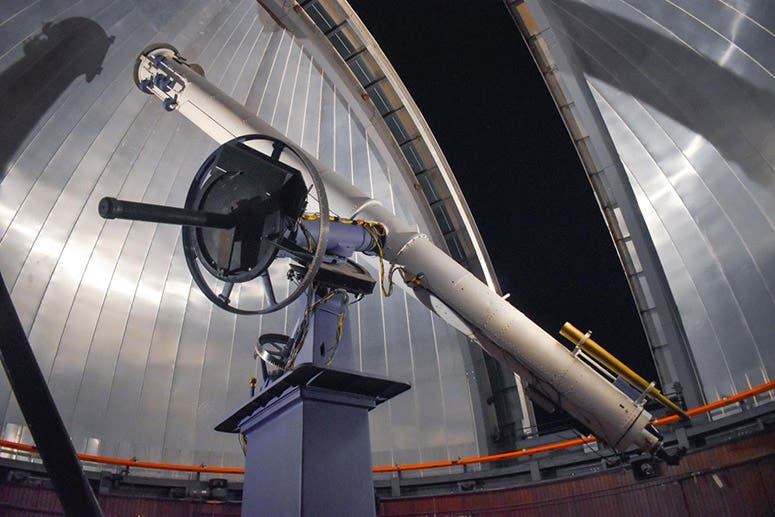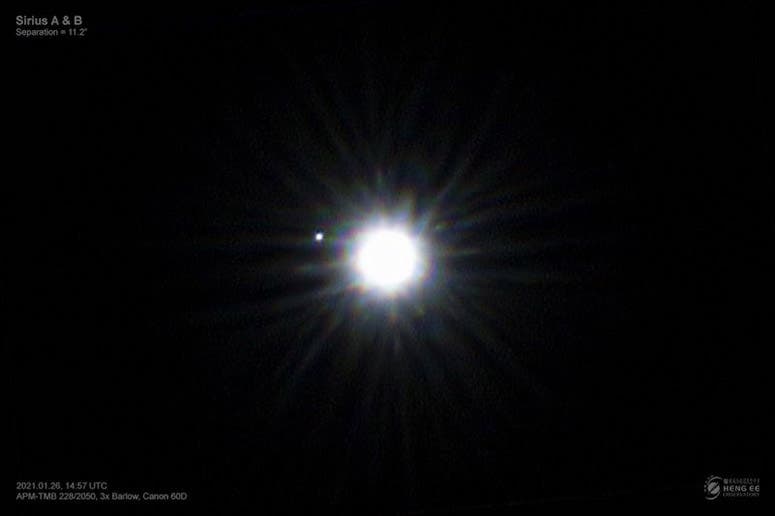Scientist of the Day - Alvan Graham Clark
Alvan Graham Clark, an American lens crafter and telescope maker, died June 9, 1897, at age 64. Alvan Clark, his father, was a pioneer in the building of large refracting telescopes (telescopes with lenses, not mirrors), and Alvan Graham, with his older brother, George Bassett, followed his father into the business, which was based in Cambridge, Mass. The three of them produced the largest and finest refractors ever built, including the 26-inch refractor for the U.S. Naval Observatory (USNO) in Washington, D.C. (with which Asaph Hall discovered the two moons of Mars in 1877), and the 30-inch refractor for Pulkovo Observatory, near Saint Petersburg, commissioned by Otto Wilhelm von Struve, who came all the way from Russia to Cambridge to meet the Clark family and see for himself what they could do with a pair of large glass blanks (26-inch and 30-inch refers to the diameter of the glass lenses, which were usually made as doublets, one lens concave and one convex, to prevent chromatic aberration). You can see photos of the 26-inch USNO refractor and the 30-inch Pulkovo refractor at our post on Alvan Clark senior.
Both telescopes were the largest refractors in the world when they were delivered, but such Guinness-like rankings lasted only until the Clarks delivered their next telescope. The Lick Observatory acquired its 36-inch Clark refractor in 1882, and the Yerkes 40-inch Clark-built refractor opened for business in 1897 in Williams Bay, Wisconsin, where the University of Chicago built their observatory. In 1893, the tube for the 40-inch Yerkes telescope was displayed at the World's Columbian Exposition in Chicago, while it was awaiting its lenses (first image). We wrote a rather detailed post last year on Charles Yerkes, the benefactor of the 40-inch refractor, in which Alvan Graham Clark's role in getting this project launched was discussed. By the time the 40-inch Yerkes refractor was getting its first light, Alvan Graham was the only Clark left alive, so we know that this exquisite and monumental instrument was primarily his work. There is an often-reproduced photo of Alvan Graham polishing the lenses of the Yerkes refractor, along with an employee of the Clark firm, that we show as our third image below. We also have written a post on James Lick, who provided the funding for the 36-inch Clark refractor on Mount Hamilton.
But I do not believe that we have ever mentioned an earlier Clark instrument, the 18.5-inch Dearborn refractor. A pair of lenses was commissioned by the University of Mississippi before 1860, but then the war intervened, and the lenses sat idle in Cambridge, until the Chicago Astronomical Society learned about them, found a patron, built an observatory – the Dearborn Observatory (named after the wife of their patron) – and acquired the telescope, which opened for business in 1865. While the lenses were awaiting their discovery by the Chicago group, Alvan Graham was testing them out one January day in 1862. He chose, for a target, the bright star in the constellation Canis major, called Sirius (for a photograph serving as a map of Sirius’ location, see fifth image). He found that the star was beautifully resolved by the 18.5-inch lens, but he also saw, to his surprise, that Sirius had a tiny companion, unobserved by anyone before Clark saw it on Jan. 31, 1862. It would soon be called Sirius B. The sixth image shows a modern photograph of Sirius and Sirius B.
Some years earlier, Wilhelm Bessel had noticed that Sirius exhibits a regular shift in position, almost as if it has an invisible companion, but no one could find it in the telescopes of that era – I do not know if anyone even looked for it, although I am guessing they did. But Alvan Graham looked in 1862 and found the companion star almost immediately – that's how good the lens was. Fifty years later, it would be discovered that Sirius B is a very odd star, quite tiny, but also massive and bright. Sirius B would soon be labeled a white dwarf star. Alvan Graham had found the second white dwarf star to be observed, the first being Eridanus 40 B, discovered by William Herschel in 1783 but not identified as having white-dwarf properties until Henry Norris Russell did so in 1910. Shortly thereafter, Sirius B was added to make a select group of two.
So the 18.5-inch Clark lens has a special place in the history of stellar classification. The Dearborn Observatory was turned over to the old University of Chicago, and when it suffered financial problems in the 1870s, the Chicago Astronomical Society regained control and transferred the entire observatory to Northwestern University in Evanston, where it still resides (although in a new tube and mount; the original wooden tube is in the Adler Planetarium in Chicago; you can see it here). The 18.5-inch Clark refractor at Northwestern was recently refurbished, and it is once again open to the public, with the original Clark lenses installed (fourth image). It is a beautiful telescope. And to think that it is just one of dozens of such instruments that Alvan Graham helped build and distribute around the country, and occasionally the world. If you ever get a chance to see a Clark refractor, you should seize the occasion. I have seen six of them, and would love to have the opportunity to see a seventh. And an eighth. And ….
William B. Ashworth, Jr., Consultant for the History of Science, Linda Hall Library and Associate Professor emeritus, Department of History, University of Missouri-Kansas City. Comments or corrections are welcome; please direct to ashworthw@umkc.edu.










![Using an astrolabe to measure the depth of a well, woodcut in Elucidatio fabricae vsusq[ue] astrolabii, by Johannes Stöffler, 1513 (Linda Hall Library)](https://assets-us-01.kc-usercontent.com:443/9dd25524-761a-000d-d79f-86a5086d4774/a998eb50-55d2-4a88-ace2-a50aa5fa86e7/Stoffler%201.jpg?w=210&h=210&auto=format&fit=crop)

